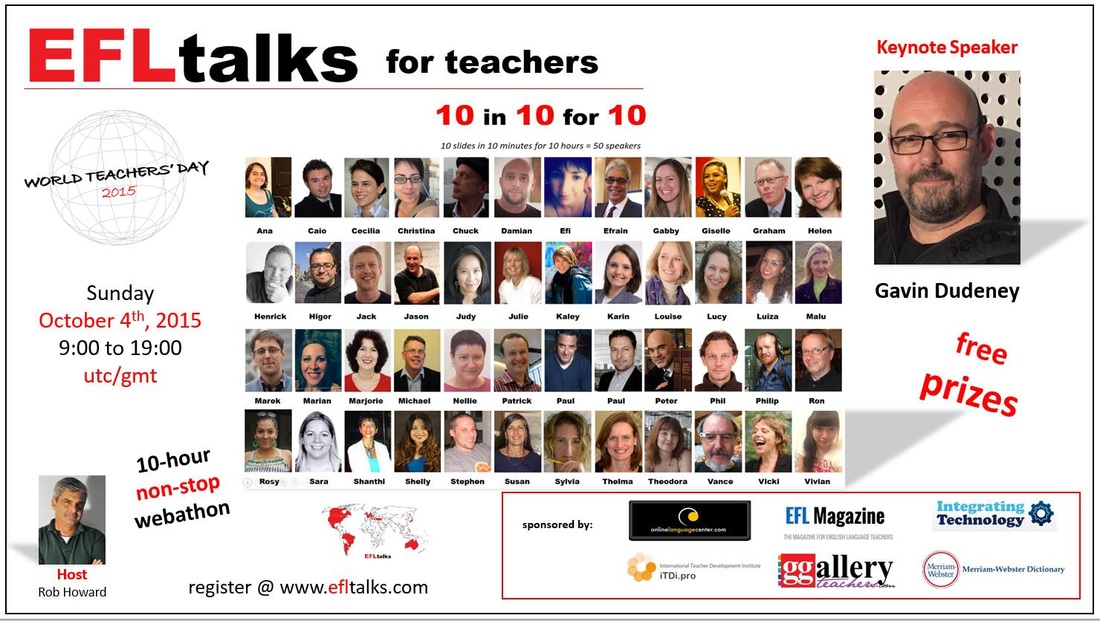|
There are teachers who feed information to students whether they like it or not and there are others who teach students to think – the latter are inevitably the best because they not only capture their students’ full attention but leave life-long learning lessons which go way beyond the subject they were teaching. Cattywampus is the story of such a teacher and I use it to practise reading this short piece aloud in class, verify vocabulary comprehension (see below) and get the students to tell us their own Cattywampus stories which we have to decide whether to believe or not. This activity is incredibly engaging for students (which we do in pairs) and the teacher has to inevitably go round helping with vocabulary to express their ideas. If you have an Interactive White Board you can READ IT ONLINE THROUGH LINGRO.COM to get vocabulary explanations: http://cbse-ncert-homework-help.blogspot.it/2013/09/best-teacher-i-ever-had-by-david-owen.html:
Once you have read the story ask students to answer the questions below the text to tell each other a story: what’s your opinion? Is it a Cattywampus? You can download the STORY with QUESTIONS below. I hope you have fun with this activity. Susan
23 Comments
Traditions are the glue which hold society together – we may have different opinions, political views, different religions and awkward characters but our common traditions keep us together. December and January in my family are also the birthday months of my children (24th December for my daughter / 24th January for my son) and I have always followed British birthday party traditions despite living abroad. Moving from country to country I realized that even simple, apparently less important celebrations such as birthday parties for children and youngsters differ greatly. We, in Great Britain, have quite traditional activities for younger children at birthday parties while organizing a party for teenagers that is fun can be quite demanding. I realized that a BIRTHDAY LESSON Plan can give insight into lesser British traditions and at the same time many Birthday Party Games can be adapted for learning languages as well. So how do children under the age of 10 celebrate a typical home birthday party? For those families who do not want to or cannot spend money on hiring an entertainer or magician, for those who prefer not to go to a ‘bouncy castle’ park or other location for birthday events outside the home, there are fun traditional games which do involve adult organization but make a birthday a special play date – different from when friends just come over to play (I discovered that in Italy children just play freely making it no different from any other occasion and due to the higher number of guests than normal, mayhem usually occurs.) When the young guests arrive the presents are all collected on a low table and the children sit neatly in a circle while the birthday child opens the presents one by one, admiring and thanking as he goes. Then it is time for the traditional organized games (this is where I had great difficulty convincing Italian children that they had to participate in the games I organized and not just play around as they liked).
There are many other traditional games as well as new technological ones but the important thing is for the children to interact all together at the party and not break up into small groups. Obviously the party ends with lots of finger food (small sandwiches, fairy cakes, crisps) and of course the astonishingly shaped* home-made birthday cake with traditional song and blowing of candles. (For lessons make sure they pronounce HAPPY BIRTHDAY correctly by ‘spitting’ the ‘TH’ sound like in the ordinal numbers (10th) and not making it a soft sound like in mother.). In Great Britain it is customary for the birthday child to give small ‘going home presents’ to the guests as they leave (which are inexpensive tokens of gratitude). What about those aged 10 upwards – how do they celebrate a typical birthday party? A theme is very often chosen. For my son’s 10th birthday party I organized a surprise ‘flight’ to a mystery destination. Everything from the ‘flight ticket invitations’, to the airport check-in on arrival and the ‘flight’ by car to the mystery destination, which was a tiny light aircraft local airport for a guided tour of the two-seater planes and how they worked. The airplane shaped cake and the History of Flight video ended the party for my airplane crazy son who is now 18 and already training for his second pilot licence. For my daughter 10th birthday in December the theme was a spy training camp for which I started sending out mystery invitations to decode every week starting in October and no one (not even my own children) knew where they came from. It all ended on the day of the party with lots of spy gadgets and fun from finger prints to shooting pop guns and working out how to unlock the treasure chests with a mystery code. Birthday parties are a big event in our tradition even for teenagers where the treasure hunt can be at the town mall picking up the unexpected presents from shop to shop on the way… How do you celebrate birthday parties where you live? Please leave comments below in a wonderful exchange… I hope you have fun with these traditional birthday party activites. Susan
http://www.appliancesonlineblog.com.au/cooking/why-the-womens-weekly-childrens-birthday-cake-book-is-the-best-cookbook-ever-written/
|
Categories
All
Would you like regular English learning & teaching ideas? Subscribe to my blog so you don't miss a post!
AuthorMy name is Susan Brodar, born in London into a multilingual family and brought up bilingual English / Italian. Archives
December 2018
|
||||||||||||









 RSS Feed
RSS Feed





